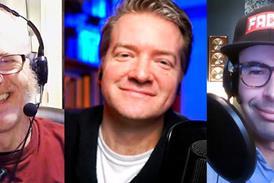The Pope shares his thoughts on how we can be people of hope in a world that desperately needs it
When I reflect on hope, I cannot help but think, first of all, of those deprived of their freedom. The incarcerated are living examples that we can welcome the presence and compassion of God, no matter what evil has been committed. There is no heart that the love of the almighty cannot enter.
It is precisely here in our hearts that hope takes root; from there, it illuminates our present – a present that can be disturbed and darkened due to all the situations that bring with them sadness and pain. Those who are incarcerated cannot be sentenced without offering them a window of hope. God is tender toward them, so we should pray for them so that they may find a window of hope that offers them a way out toward a better life.
Read more:
Protestant, Catholic and Orthodox: What’s the difference and does it matter?
Catholics have questions
Does the Catholic Church need to modernise?
Hope not optimism
I always prefer to speak of hope and not optimism. Since optimism is a mood that today is here and tomorrow is gone, it is variable. Some are optimistic, others pessimistic, but this is not how to relate to the future. I am a Christian and like to say: “I have hope.”
That is why in moments like these, amid everything that is happening in the world – including again facing the cruelty of war – it is essential to raise our voices of hope: it is the only voice that can challenge the status quo and get involved in the reality that surrounds us.
There are no magic formulas, yet specific postures can help us with our neighbours, Common Home and many other issues. For example, we need to restore a sense of universal fraternity and not shield our eyes from the tragic circumstances of the poor that prevent men, women and children from living with dignity.
This hope, different from optimism, never fails. An image by Bansky, a contemporary artist, on a wall in London illustrates this: we see a little girl letting a red balloon in the shape of a heart float away. Next to the image of the girl, highlighting the balloon is a phrase written in black and white: “There is always hope.” This same hope “bids us live fully in the present”. This is definitely a gift that God wants to give all of us.
I want to call into action believers and nonbelievers, and dialogue with all about our Common Home, universal fraternity and the concerns of humanity.
I want to dedicate a special paragraph for all people of the Catholic faith to remind them that we need to be faithful people of God, mobilised together if we want to see change. In my apostolic constitution Praedicate Evangelium, I recently issued a call for missionary mobilisation in the entire Church. The Pope and his collaborators “know that they were not established by Christ to undertake by themselves the entire saving mission of the Church to the world”. This is a call for all to walk together in hope since we will go nowhere without hope.
Get access to exclusive bonus content & updates: register & sign up to the Premier Unbelievable? newsletter!
Mercy
After hope, mercy must follow. Mercy was the subject of the Extraordinary Jubilee of 2015 to 2016. At that moment, I wanted to bring attention to the fact that we have been shown mercy and that the mercy of God is beyond our own limits, sins and errors.
There is a story of Saint John Marie Vianney, the “Priest of Ars”: A widow was crying for her husband, who had taken his own life by jumping off a bridge into the Seine. “He is now in hell,” she said. The priest told her that the mercy of God was so great that it was found between the bridge and the river.
Mercy is a subject I touch on often. We are all redeemed by mercy. In my office in Saint Martha’s House, there is an image of the capital on a column at the Basilica of Saint Mary Magdalene in Vézelay Abbey. In the medieval period, when there were very few literate people, the capitals atop these columns served as catechisms. People would look up to them and understand.
This capital shows Judas Iscariot hanged, and below him is the devil, who throws him into hell. On the other side of the capital is the Good Shepherd rescuing Judas with a sly smile. This capital is a whole catechesis teaching that the mercy of God is stronger than anything.
In the name of God, I ask that we will be pilgrims of hope.
This article is adapted from Pope Francis’ new book I am Asking in the Name of God, out now from SPCK and available here.
Pope Francis is the first Latin American to be elected to the chair of St Peter. Born Jorge Mario Bergoglio in Buenos Aires, Argentina, he was ordained as a priest in 1969. He served as head of the Society of Jesus in Argentina from 1973 to 1979. In 1998 he became the Archbishop of Buenos Aires, and in 2001 a cardinal. Following the resignation of Pope Benedict XVI in February 2013, Bergoglio was elected as his successor. He chose the papal name Francis in honour of Saint Francis of Assisi.























